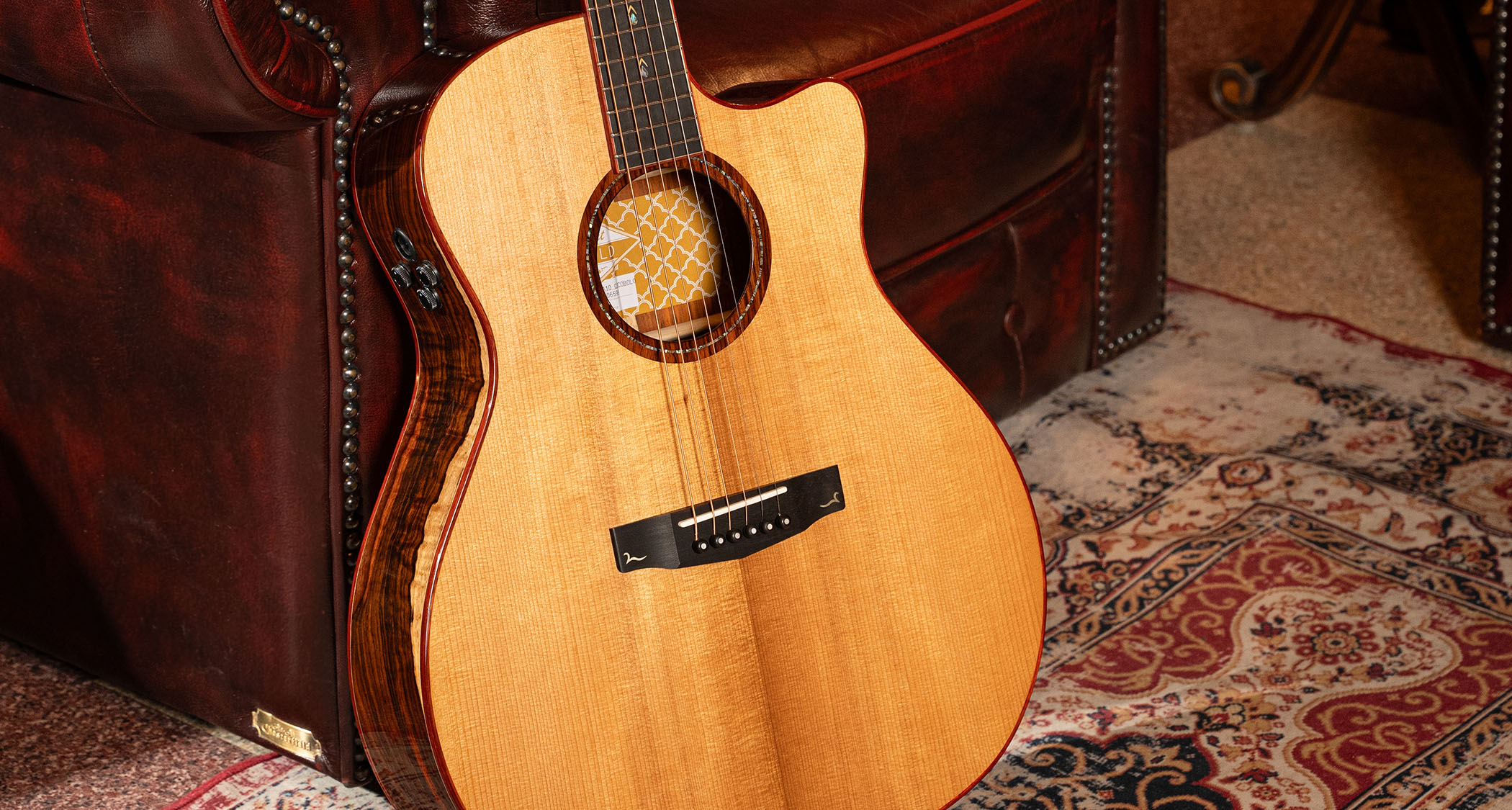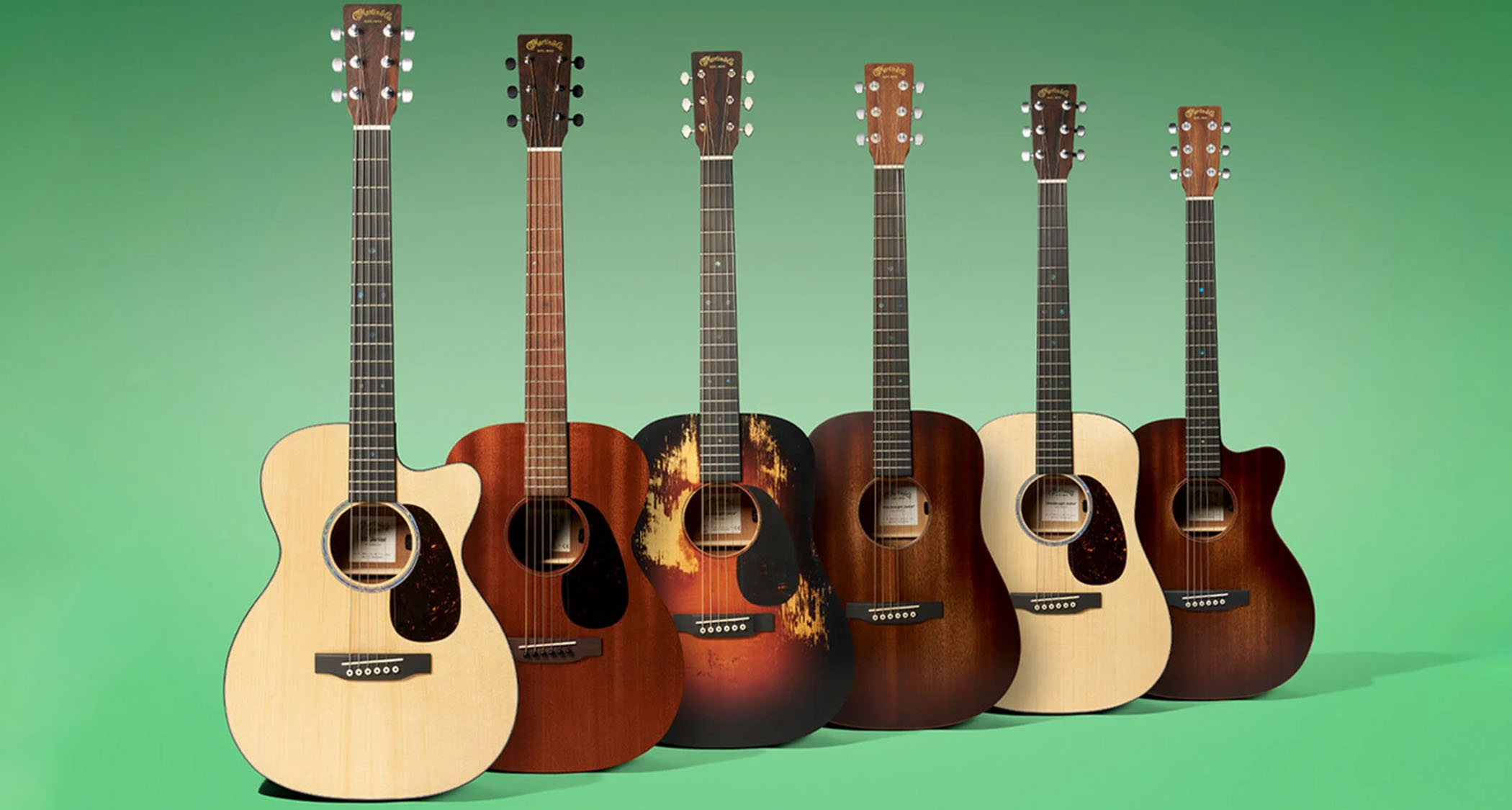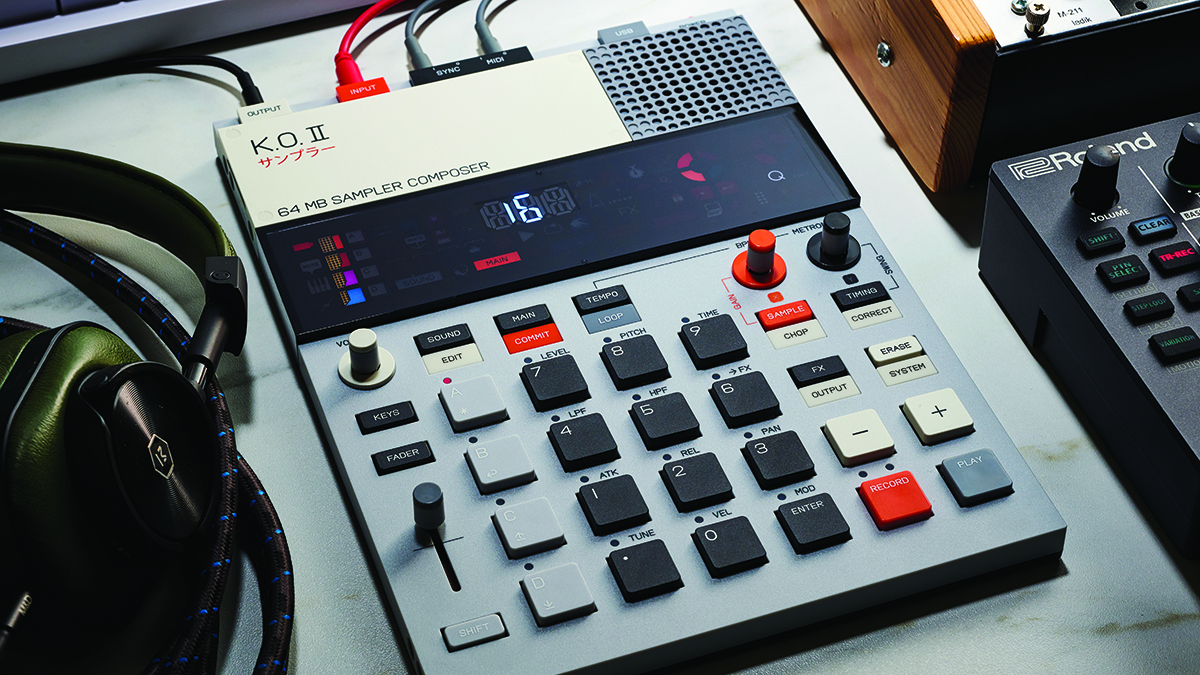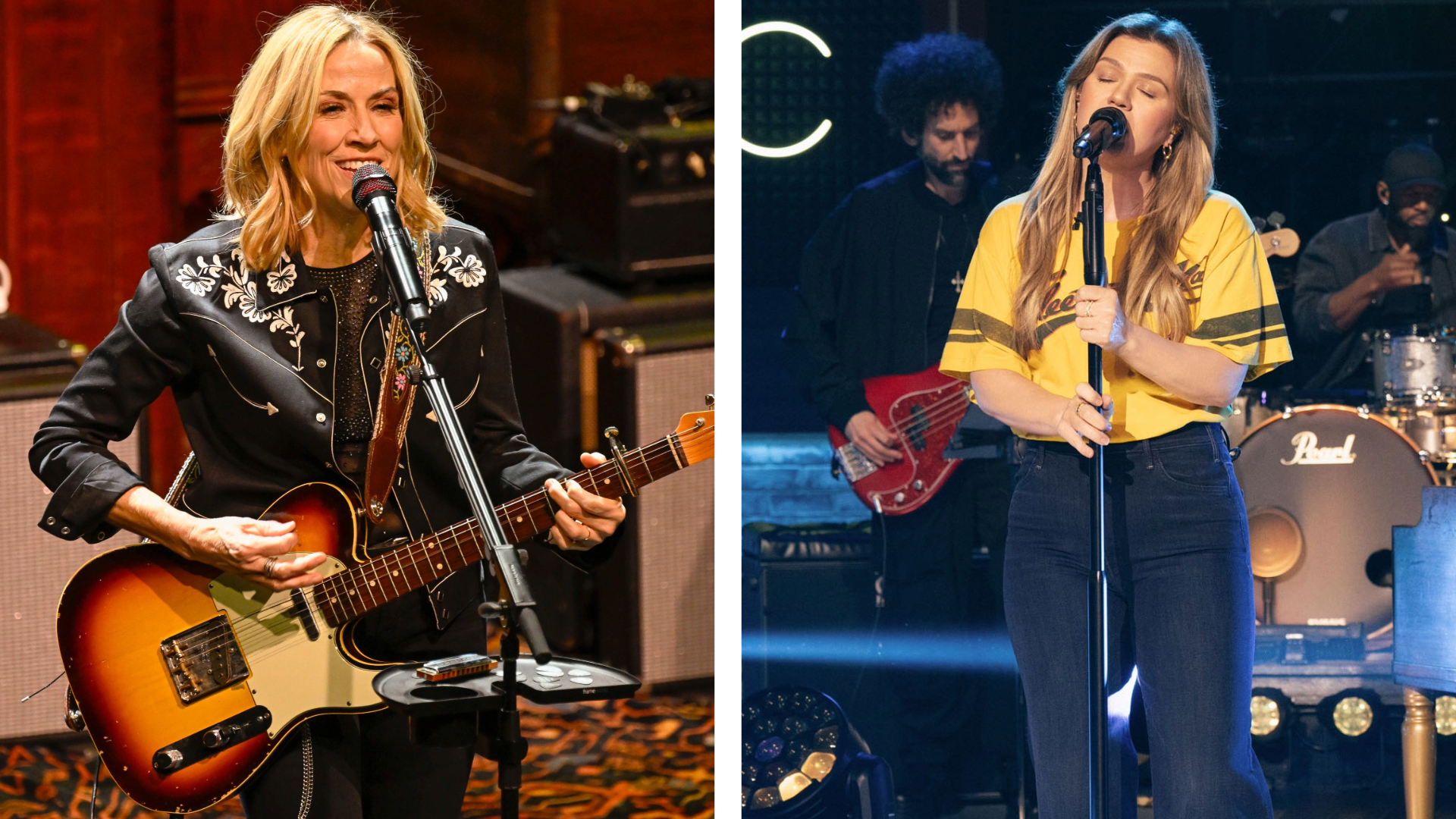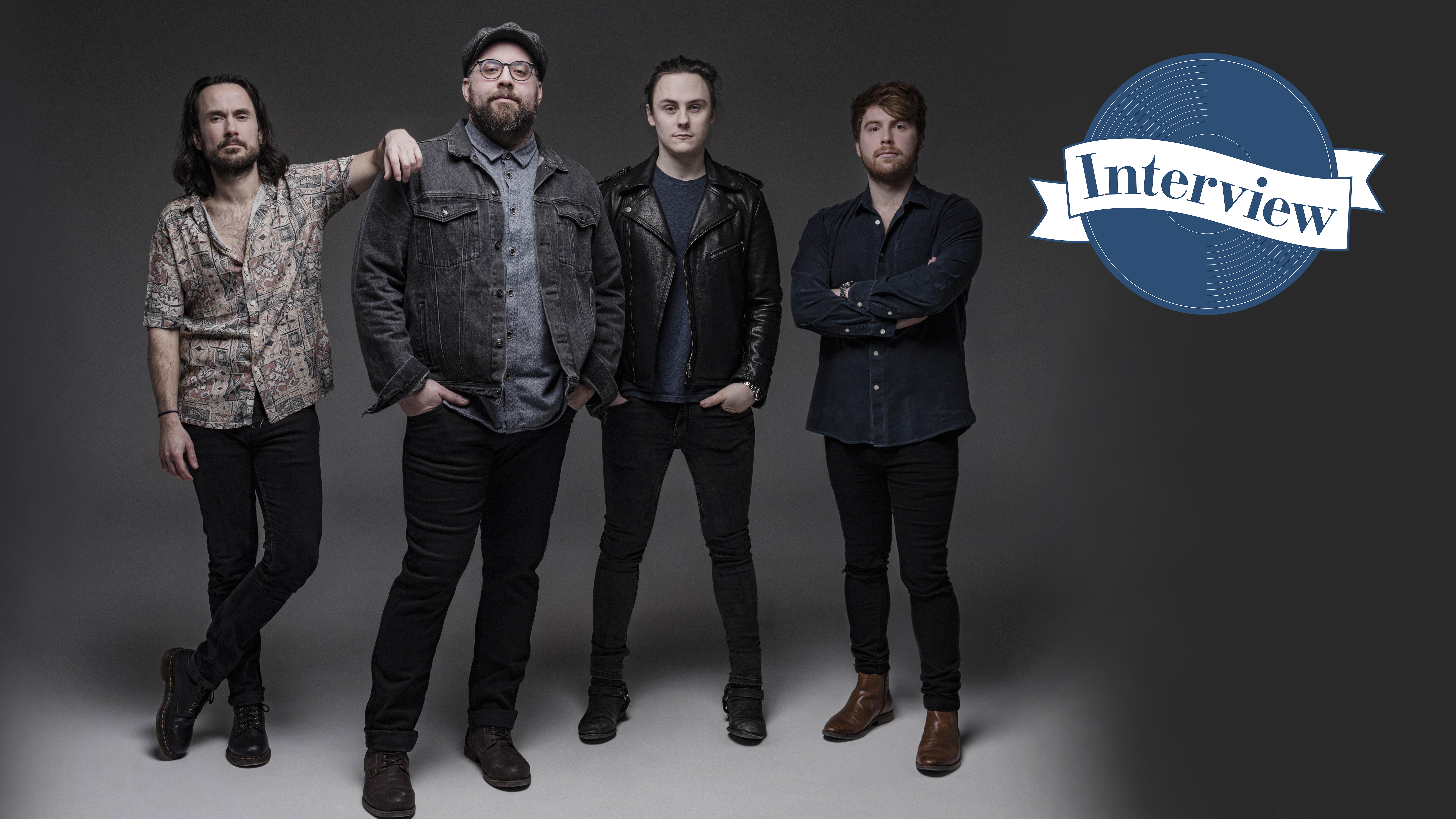
Cardinal Black is Chris Buck's new band… but also his old one. We'll get to that story soon but project ten years in the making has all the makings as the perfect showcase for one of the most promising UK guitar talents to emerge in the last decade. One who has also polled high with MusicRadar readers for his playing and his weekly Friday Fretworks YouTube show.
If you know Chris Buck from his stunning, emotive guitar work on Instagram, YouTube or in his other band Buck & Evans, Cardinal Black will be a very welcome surprise. The Welsh four-piece, completed by the soulful vocals of Tom Hollister and groovesome rhythm section with drummer Adam Roberts and newer recruit Sam Williams bassist have just released their first single as Cardinal Black with Tell Me How It Feels and it's a very strong start indeed.
We met up with Chris to talk about the story behind the band, his hopes for the future and plenty of electric guitar discussion – including his famous fans…
“The new band Cardinal Black, I say new in the loosest possible way, we started off as a trio about ten years ago," explains Chris about the band's unlikely beginnings. "Tom and I met through mutual friends and it was his university dissertation project to put a band together, write a couple of songs, release a three-track EP at the very least and arrange a launch gig. That was it, that was the plan and that was going to be the extent of it. So we did that."
Then something unexpected happened, and it involved legendary musician Steve Winwood.
Steve Windwood showed up at our gig – just totally randomly.
“Tom and I wrote a couple of tracks, literally enough to get through one gig after chucking a couple of covers in," says Chris, picking up the story. "And then Steve Windwood showed up at our gig. Just totally randomly.
"Tom’s lecturer in uni was really good mates with a guy called James Towler, who is Steve’s producer / day to day manager / mixer and engineer… he does a bit of everything," Chris continues. "James was coming along to the gig anyway and literally as he was walking out the door, Steve asked, “Where are you off?” and he told him he was going to a gig in Cheltenham and asked if he wanted to come along.
Get the MusicRadar Newsletter
Want all the hottest music and gear news, reviews, deals, features and more, direct to your inbox? Sign up here.
“At the gig we got chatting to Steve and he invited us to his studio. It all sort of snowballed off the back of that. That band was together for two or three years. We never got around to doing a full record. We split up before we had the chance with people going in different directions but we remained really good friends. There’s always been an album of material there at the very least hanging over our heads for the best part of a decade, plus the material we’ve written here and there since then."
And it turned out lockdown was a blessing in disguise when the decision was made to reactivate the band as a four-piece under the name Cardinal Black.
“With so little to do last year it made sense to get together and start working on it," says Chris. "The good thing about lockdown is there was no expectation. We made a conscious decision not to talk about it because it sets a level of expectation of when it was going to go live or when it was going to be released. So we were quietly beavering away in the background with the idea that we announce at the point things are starting to open up again. Touch wood, we seem to be on the cusp of that.
Tell Me How It Feels is the first taste of a four-track EP that will follow, then a full album after that.
"In terms of material we’ve got tons of the stuff because we’ve been together, in a loose sense, for so long," confirms Chris.
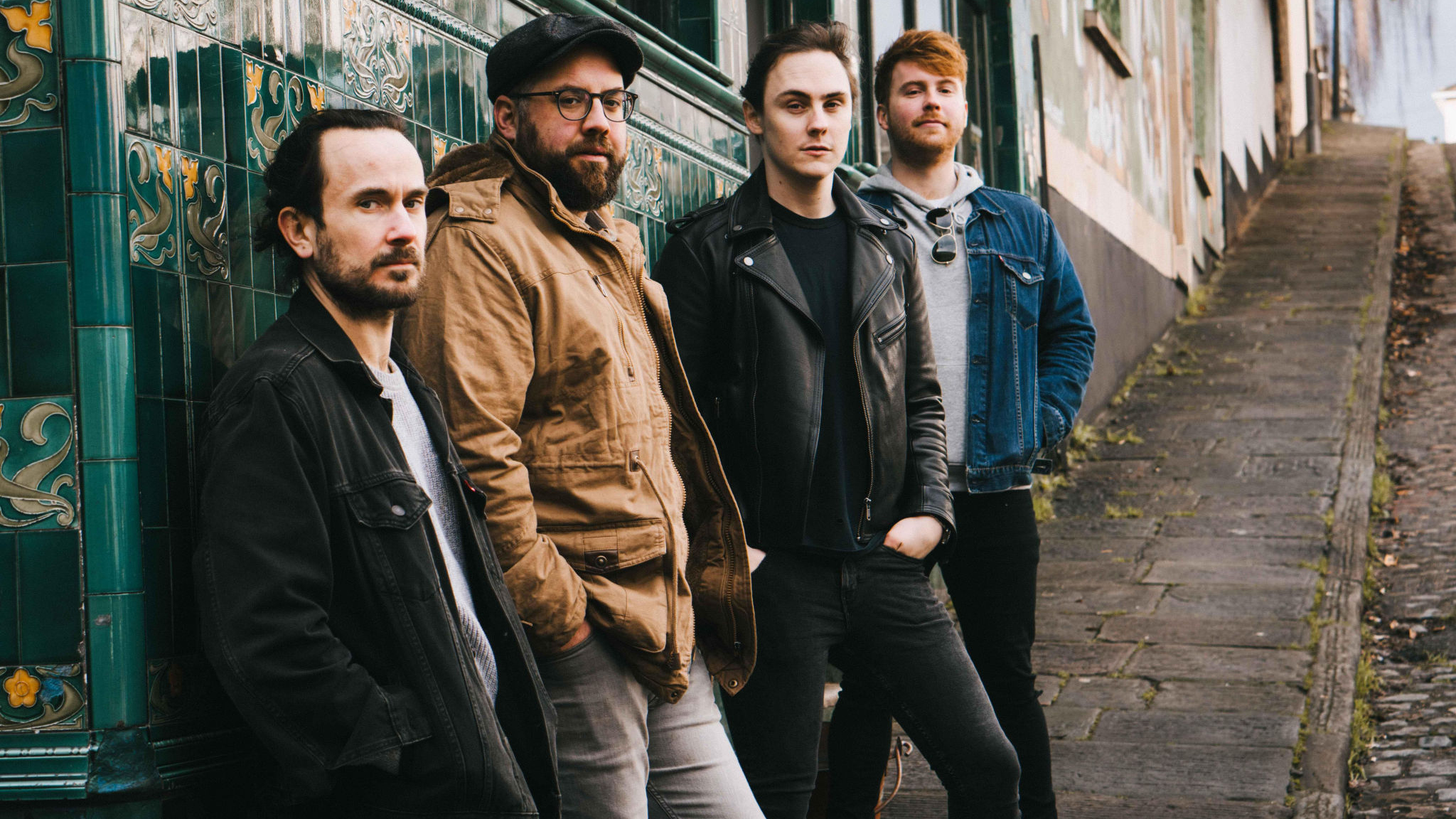
Is Tell Me How It Feels a song that’s been around for a while?
“Bizarrely that’s one of the most recent ones. We had a bit of a debate as to what tracks to release. It’s a bit of a catch 22 in that you want to go out with all guns blazing and grab people’s attention and make sure it’s something that sticks in their heads. But at the same time if we are looking at a full length release relatively soon, we don’t want to give away the prime cuts. It was a bit of a juggling act to decide which tracks made this four-track EP and which tracks were kept back. All with the caveat that if we didn’t make a decent splash with this EP, are people even going to bothered with the record.
“The initial plan was to go out with a full length album and tour it but that’s obviously not possible at the moment. So we thought, let’s test the water a bit and whet people’s appetite so when the time comes we are infinitely more prepped in terms of having a ready made audience. I suppose the beauty of this band to a certain degree is because I’ve developed a bit of a following in the last couple of years, there’s always going to be a following or interest in it straight off the bat. But the obvious aim is to reach more people than I’ve reached so far. Which is globally speaking a relatively small amount of people. The plan is to make that big splash with the first record.”
You describe yourselves as an alt rock band and it’s quite a soulful song, is that indicative of the material still to come?
“We’ve had an internal debate over the last couple weeks as to what we are. In the broadest sense we are a rock band but Tom has that big, classic kind of soul voice. Irrespective of what you stick that over it’s going to infuse a soul element into it somewhere. But I’d say that song is fairly indicative of our music. It’s guitar driven – I’m in the band so I wouldn’t have it any other way!”

“This is actually the first time I’ve given a real amount of thought to writing rhythm parts"
The song leaves plenty of space for your guitar but you’re also leaving space too…
“Ah cheers, well funnily enough for the Buck & Evans stuff it’s typically more guitar heavy than this and I’d stick down two rhythm parts left and right and then the lead goes in the middle. With this we were going for more of a modern sound I guess, with a little more space. Maybe sparse overall. It was one of the few times in my life where I’ve really given a lot of thought to what the rhythm part is. Anyone who knows they’ve got a solo in a song can be guilty of getting a little bit bogged down with what that’s going to be and then the rhythm part is playing a few chords and that will be alright.
“This is actually the first time I’ve given a real amount of thought to writing rhythm parts and making sure that then complements what is happening in the rest of the band. Whether that’s picking up on syncopated drum parts or keys – we’re adding keys in and although it’s not an official part of the band we’ll probably be going out with a keys player. So it was a matter of making sure the guitar parts work with the keys too. We’ve had an infinite amount of time to get it down and it’s just been a really fun process to make sure it sounds as good as it physically can."
There’s a really nice guitar break at the end from you – especially that simple and memorable refrain that plays the song out. It’s great to hear a guitar solo as an outro.
“Literally a couple of days before we recorded it, we re-structured the song and that refrain happened in the middle of the track as a broken down section which then went into the guitar solo, and then it happened again at the end of the track, as it does on the recorded version.
"We were listening back to the demo as we went into the studio and it just felt a little bit superfluous. It was infinitely more impactful if that refrain just happens at the end. So instead of that broken down section in the middle of the track, it went straight into the guitar solo. I was a little bit sceptical initially when that was suggested as I’m a little stuck in my ways. I’m glad it was now as it’s made it much better. Part of the process is being big enough to swallow your pride every now and then.”
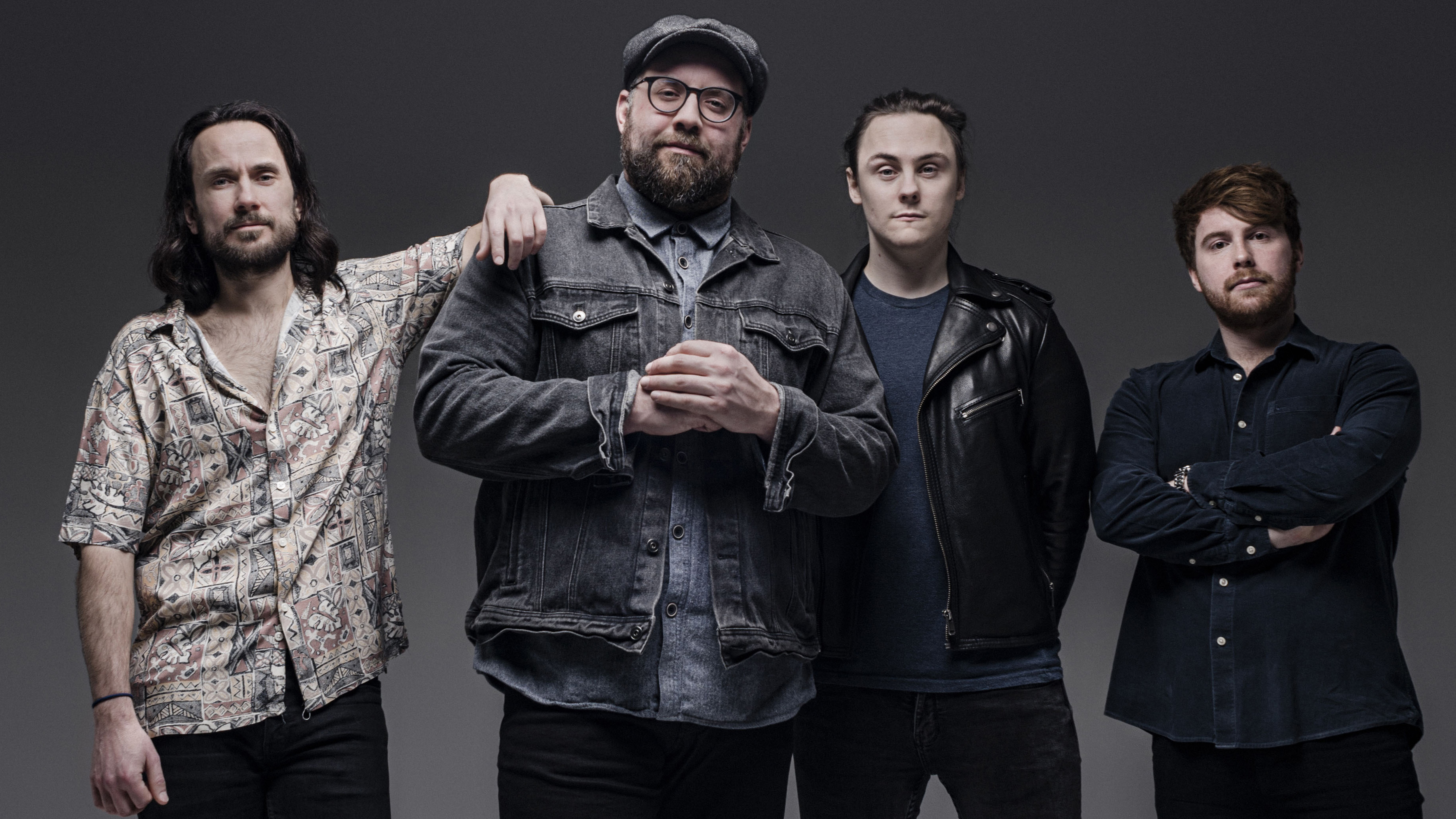
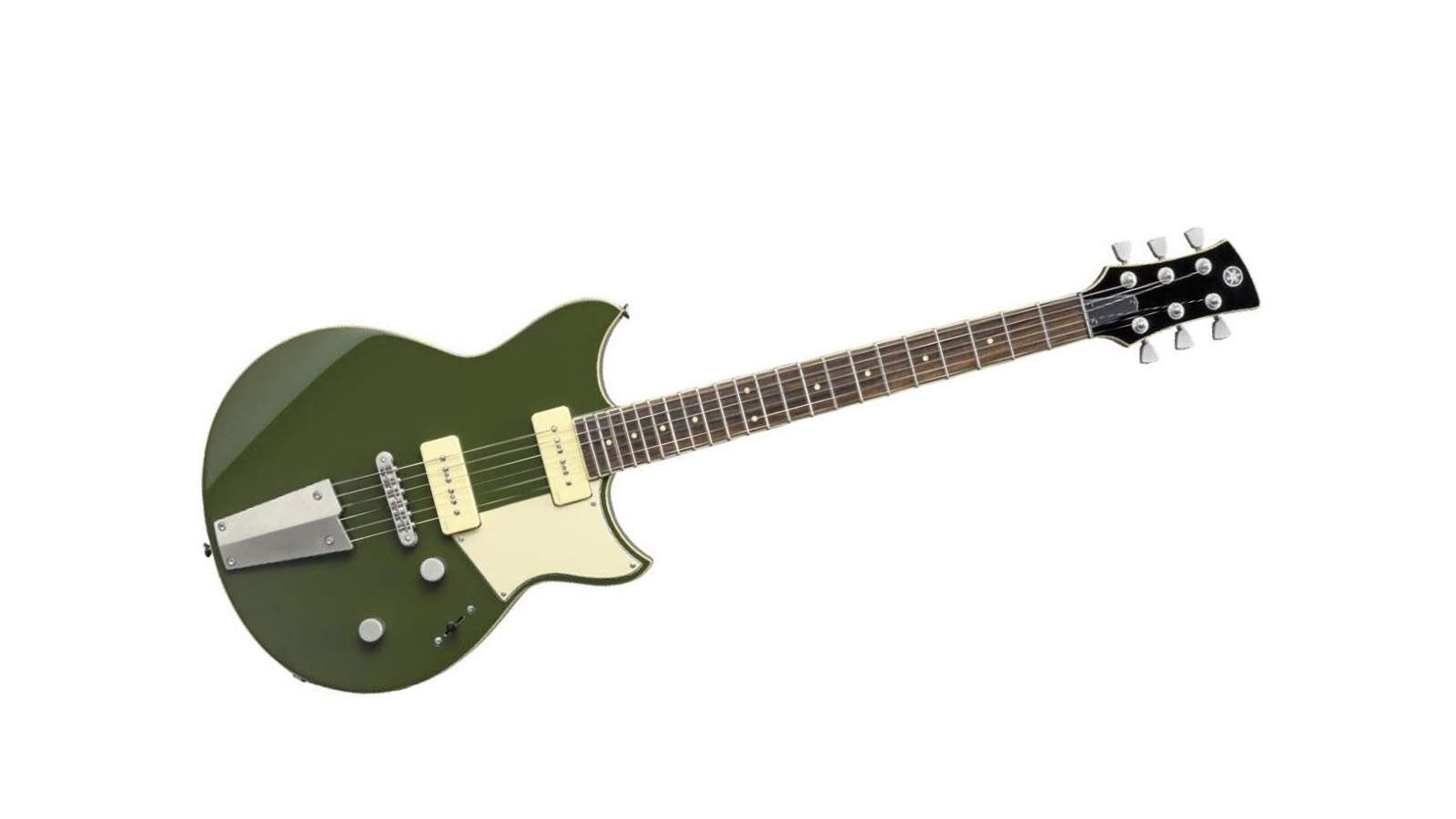
The video is one-shot with the band playing, did it take a lot of takes?
“That was my idea actually, not that I can take credit for it. I thought with the relatively up-tempo nature of the track and given we had the massive video wall we could play with, I thought it would be more impactful if it could be one continuous shot.
“Chris Watkins shot the video and he’s great. I think it took about 20 takes which is either a lot… or not very much, given that it’s reliant on us knowing our parts and making sure we’re relatively competent at miming what we’re doing and also expecting Chris not to fall over or trip up a lead. It was a relatively painless process – the longest part of the day was constructing that video wall. It’s a fair old size. Videos are usually a necessary evil but that was good fun.”
You’re playing a Yamaha Revstar in the video too…
“I’ve been playing a Revstar since 2016, back when they came out and I played one in a music shop and really liked it. I got in touch with them and they were really keen to start linking up on stuff. It all culminated in them asking if I wanted them to build me a custom shop model in Los Angeles that could be whatever I want. So I picked it up at NAMM last year.
“I’ve always been fairly pragmatic when it comes to guitars, endorsements and affiliations aside, I’ve always gone for the right guitar for the right job. There’s tracks on the EP that are undoubtedly Strat tracks and there are tracks on the EP that are Revstar through and through. I just go with what I’m hearing to be honest. If it’s humbuckers, I go for a Les Paul and I have no affiliation with Gibson but if it needs to sound like a Les Paul, why bother trying to make something else sound like a Les Paul? They’re tools at the end of the day and this track happened to be a Revstar track. It looks quite cool in the video as well!”
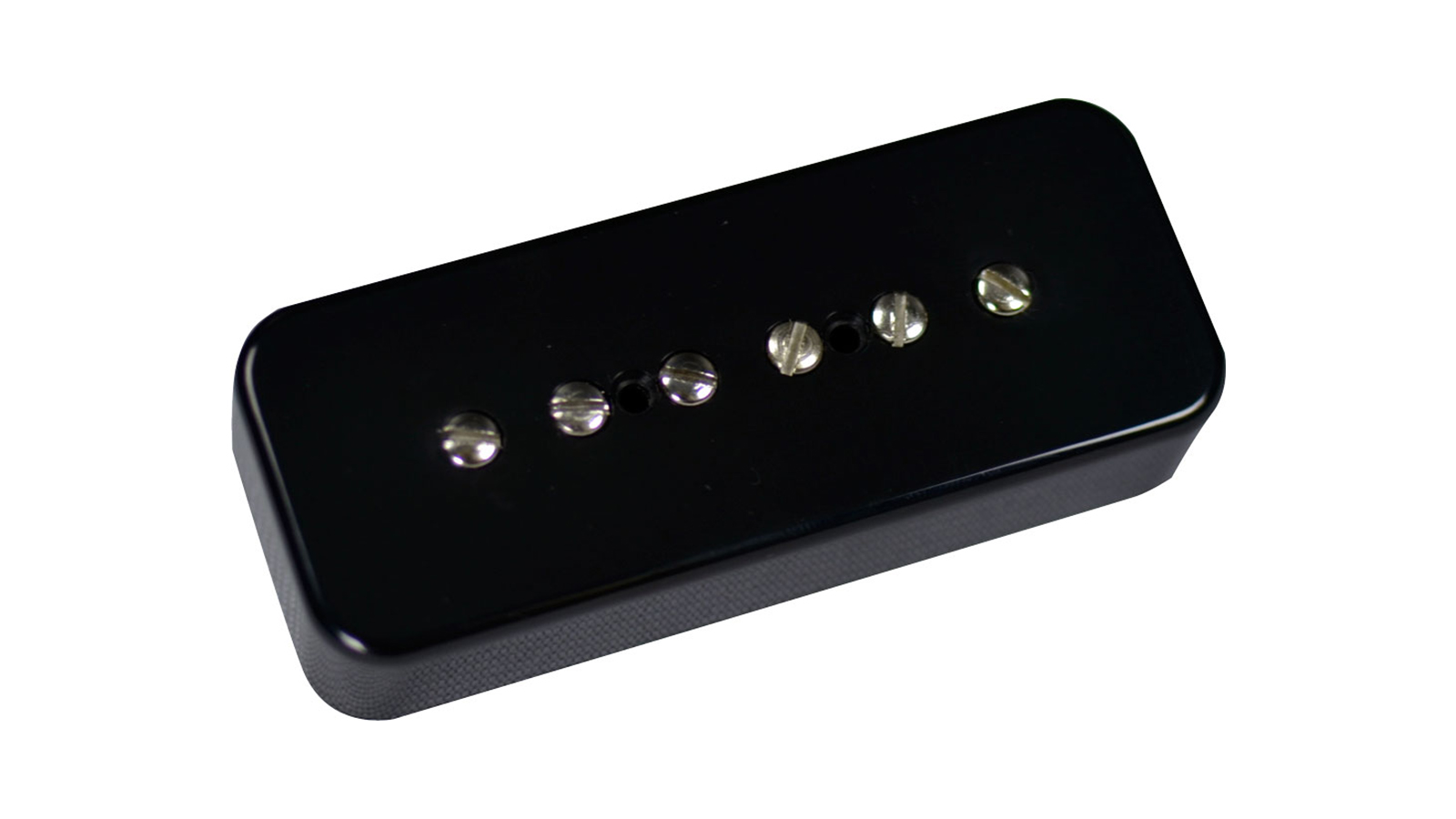
Best electric guitar pickups 2021: top-rated single-coil, humbucker, P-90 and active pickups
The Revstar seems an underrated guitar still, how do you find it compared to a Les Paul?
“I think you’ve hit the nail on the head there, they are underrated. I’m one of the few guys consistently trumpeting the Revstar and whenever someone gets turned on to it I invariably get a comment back saying, “This is really good” with that tone of surprise. Which is incredibly frustrating for Yamaha’s part but things slipping under the radar or feeling under-appreciated isn’t the worst thing I guess. You get a bit of a diehard following then from the guys who know. The custom model I love and the model that was based on are P-90 models and I’ve never particularly got to grips with a Les Paul that has P-90s anyway so for me it felt like its own thing straight off the bat.
“I guess if you are coming into it from a Les Paul there are elements that will feel familiar like the neck profile, overall weight and distribution but for me, having never got my head around a Les Paul with P-90s anyway, it feels like a Revstar. It always has.”
P-90s for me, to be honest, are probably the perfect pickup
P-90s can vary quite a lot, what do you tend to look for in them?
“To be honest, similar to what I look for in Strat single-coils. Relatively low wind, I don’t know if it’s my preconceptions informing what my ear hears but I prefer low wind across the board. I feel that you hear more of the guitar’s natural character and resonance. I don’t want to hear the pickups basically, I want to hear the guitar that is being amplified by a good set of pickups. As soon as you get into asking where that sound is actually coming from it defeats the purpose somewhat. You might as well make a guitar out of a tin can at that point.
“P-90s for me, to be honest, are probably the perfect pickup. I say that as a person who is a dyed in the wool Strat guy with a signature set of Strat pickups. It’s the ultimate cliche isn’t it but they are that halfway house between a humbucker and a single-coil.
"Over the last couple of years I’ve been lucky enough to play a couple of bursts and couple of really nice PAF-equipped guitars and it’s a perpetual amazement to me that you will have to part ways with the best part of £6,000 to get an original set of PAFs but you are looking at a fraction of that to get an original set of P-90s. Aside from the hum, if you can live with that, they are every bit of the pickup of a PAF. They really do everything and are arguably more versatile."
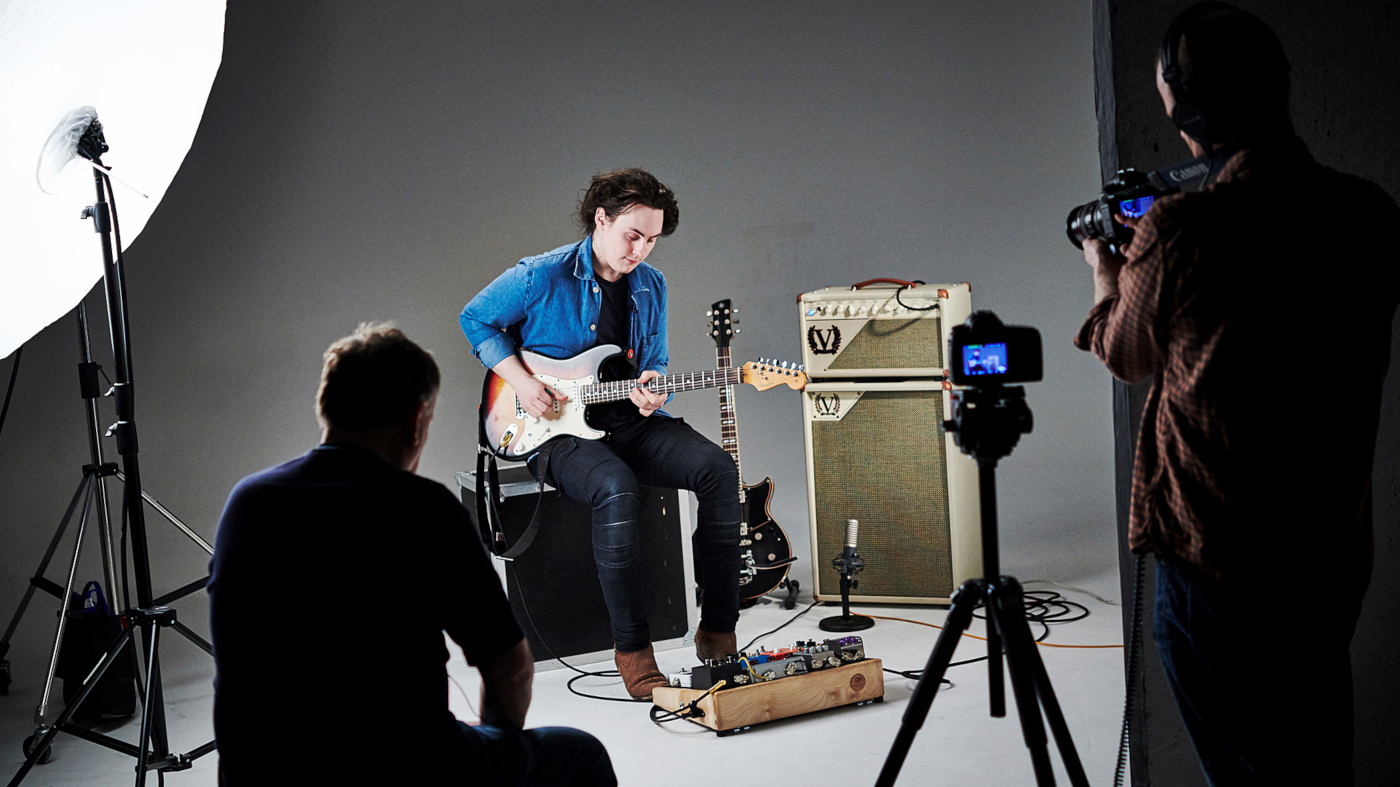
I’ve gone about as far down the pedal rabbit hole as it’s possible to go
It’s easy to get stuck in this thinking that hotter pickups equal better.
“The past couple of years I’ve gone full circle. I started off as a Les Paul into a Marshall guy and the hotter everything was the better. The louder my amp was, the more gain I had, the more power I had playing pubs and clubs around the Valleys in South Wales. Then I started to move away from that, still using that Marshall as my main amp but I was struggling to get it as clean as it would go and then using pedals to boost that.
“At that point you start to come around to the idea that if you’re running an amp clean, and unless you’re running a sound on the edge of breakup, you don’t really want anything to be pushing that amp into overdrive. Especially as I was relying on pedals to get my sound. And I’ve gone about as far down the pedal rabbit hole as it’s possible to go. I don’t want anything else to push my amp to where it’s starting to break up, because that’s what I want my various gain stages for. The whole hotter is better thing is a bit alien to me at this point.”
I had absolutely zero intention of buying a Klon
Which brings us to pedals – you now have a Klon Centaur…
“I have. I’m the ultimate cliche now! I feel bad, I was even reticent to make a video about that but to be entirely truthful I thought I could at least claw back some of the bloody money I’d spent on it.
The thing with that is I had absolutely zero intention of buying a Klon and I’m very quick to point out that at no point did the sound of the thing even enter the equation of me deciding whether to purchase it or not. As far as I’m concerned any number of the klones sound equally as good. I use a Ceriatone Centura which obviously looks the part as well so it tells my brain that it sounds as good.”
How close is it?
“I’m at the point now where I’m starting to distrust my ears anyway. Huw Price at The Guitar Magazine did a lot of work on my ‘62 Strat I picked up the year before last. He’s got a background in engineering so I think his ears are in tune with different frequencies but I’d spend time with him and he’d be describing things he was hearing and if it wasn’t for his background and level of knowledge I’d have thought he was pulling my leg. I couldn’t physically hear that and I know what I want to hear and what I like hearing but in regards to when it comes to comparisons, I can’t hear the difference – it all sounds the same to me.
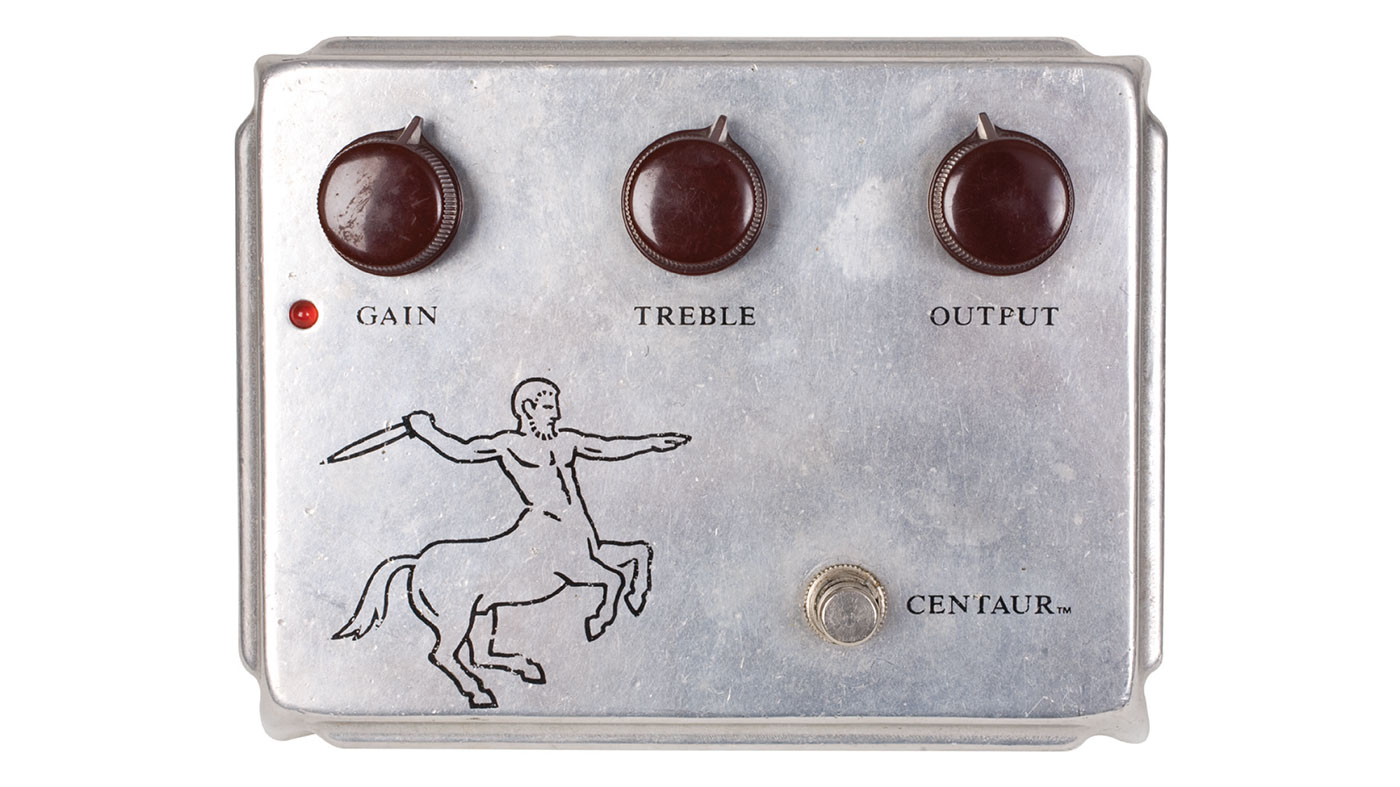
"I feel like a very old man now, like I should be wearing an elasticated waistband, but the Klon was bought entirely as an investment. I’d made a video about one back in 2019 and then I was staggered looking through Reverb and they were just starting to touch two grand for the basic no horse logo silver one. The gold one with the horse is the one that’s always demanded the higher price. Fast forward to when I bought mine and that silver no horse one is touching £3,000-£3,500 in some places. In the space of just over a year they’ve gone up 50% on that.
"The guy [Bill Finnegan] isn’t making them anymore, apart from a few very select models he decides to sell on Ebay. They’re only going to go down in quantity as people keep buying them and they’re going to go up in people’s estimation as people like Jeff Beck, John Mayer, Frampton and whoever uses them and talks about them. A slightly boring purchase but it’s sat in a box in my house.”
Some people call Klons the 5% difference, and once you try one you can’t unhear it. Where do you stand on that?
“The only time I’ve ever experienced that kind of thing and again, it’s the ultimate cliche to say it, was with my ‘62 Strat. I took it to That Pedal Show and me, Dan [Steinhardt) and Mick [Taylor] spent a bit of time with it. And Mick was so bold as to say, “It’s not 5%, it’s 20%” and I don’t know if I quite prescribe to the idea that it’s another 20% on top but there is definitely something. Whether it’s the amalgamation with that guitar; the old wood, the pickups, the wiring, whatever it is. There’s something about that guitar that just has that magic in it.
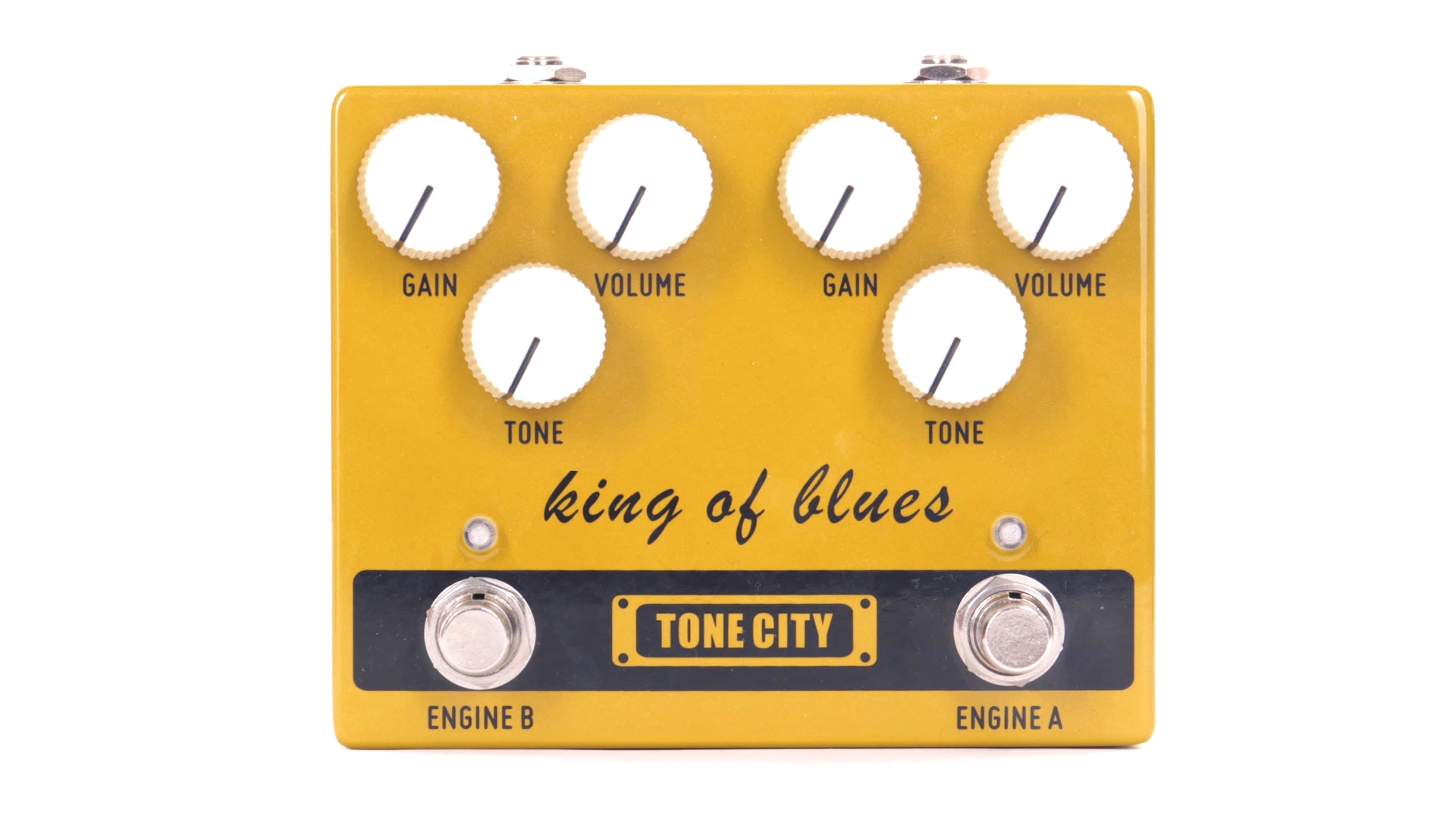
8 cheap but great guitar overdrive pedal alternatives to boutique classics
“I was in a unique position with that in that the price I paid for it didn’t dictate my perception of it. I paid less for that guitar than I would for a Custom Shop Strat. So I guess I was in a relatively lucky position in being able to look at it objectively anyway, and then think, what the crack with pre-CBS Fender stuff? Is it that good? Is it the fact that it’s old and people associate it with hearing that era on any number of records? Yes, there is something about it.”
Your Strat required quite extensive work on it and it’s good that it retained the quality – that essence.
“That was the balancing act - how far do we go? Do you want to strip it of its identity and make it like a classic ‘60s Strat or retain some element of that vibe. The obvious example is the paint. It’s a Pontypridd car workshop special – god knows what it is but it’s not guitar paint that would have originally been put on it. The only other colour I’ve found in one of the cavities is a different shade of red so my suspicion is that guitar was probably imported into the UK as black or sunburst, Hank Marvin was driving sales so Selmer were spraying them red as they were taken out the case and then flogged as a Fiesta Red Strat. That probably started to fade over time and then the guy who owned it probably took it down to his mate and said, “Stick some Dulux on this!”
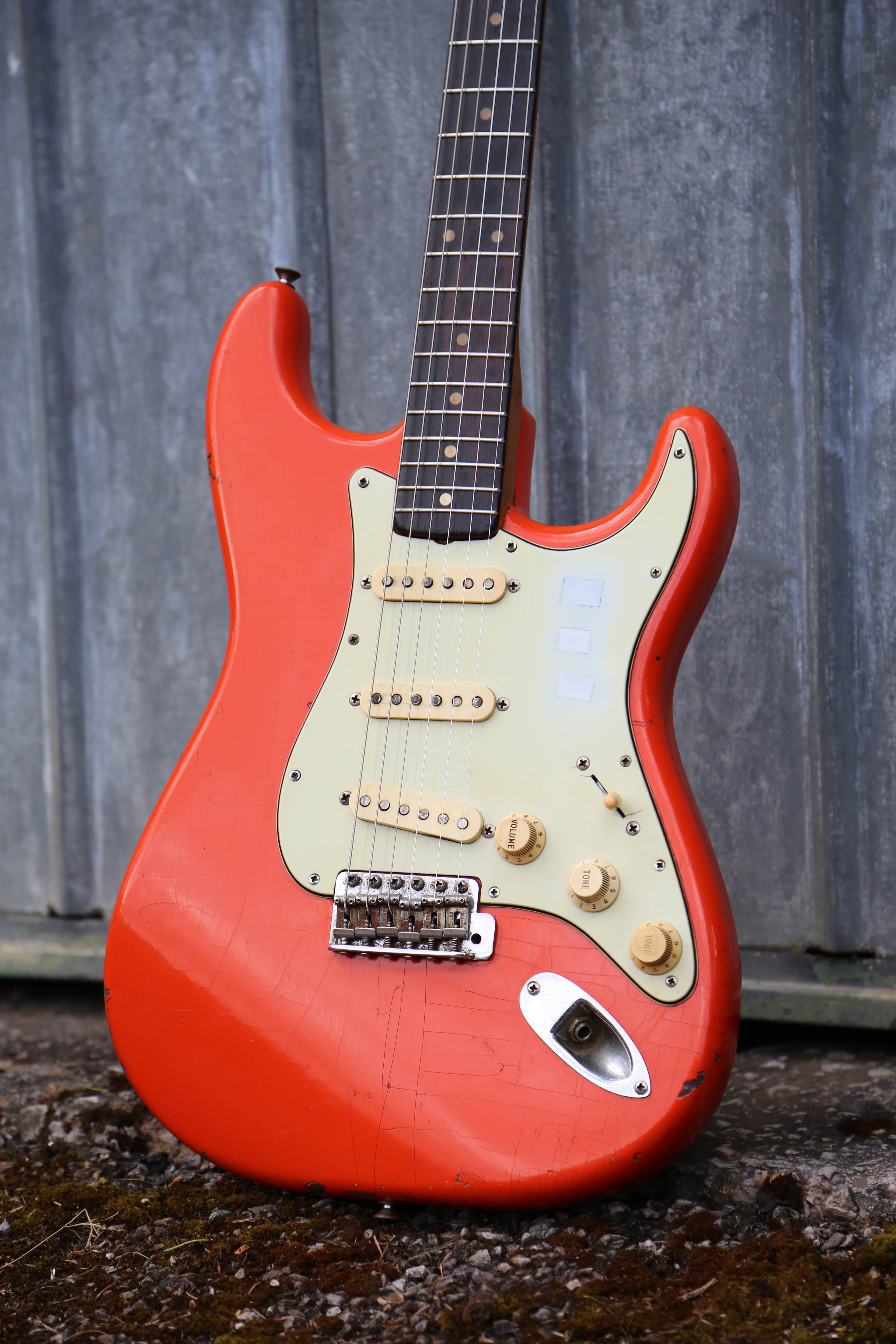
"We got to the point where we’d done all the restoration work to get it playable and thought, this is amazing. Let’s leave it there."
“Obviously it’s not original to any degree and the obvious choice would be to strip that spray it properly Fiesta Red. But that finish had been on the guitar since the early ‘70s at the least so it’s probably got 50 years of wear, sweat and tears. It felt like it would be needlessly stripping it of its identity.
“The holes in the pickguard look like they’ve been routed out with a dessert spoon or something for those extra switches. We needed to fill them in and they can’t just be holes as that would be a hazard. Again, it would have been easier to get a repro pickguard but straight away, people will look at that pickguard now and see the three marks on the pickguard and know that’s the guitar, that’s Chris’s. The approach we took was let’s make it playable, get rid of anything that’s hampering it being as good as it can be. Then deal with things as and when from that point. We got to the point where we’d done all the restoration work to get it playable and thought, this is amazing. Let’s leave it there. Anything else we’s be detracting from it.”
Is that one on the EP?
“It is actually. Again it’s become one of my go-to guitars. It’s always out of the case and has a relatively decent set of strings on it so I can just grab it if it fits the track. It is a special guitar.”
What’s your other go-to Strat these days?
“It’s my Highway One and that was my main guitar for the longest time. I’ll still find myself leaning for that one, whether it’s just kneejerk response or Pavlovian treatment at this point. That’s the one my signature [Radioshop] pickups was developed with and that’s how I know a Strat to sound. I’ve been playing so long, that’s what feels like home.
“I think the Highway One is more delicate, it’s more typically Straty, whereas the ‘62 is a little more… funnily enough I compared it with another ‘62 recently and that one was more like my Highway One. More glassy and that high end chimney bell Strat sound going on. My ‘62 feels a bit more like a bludgeon I guess. More midrange and girth about it for want of a better phrase – it’s probably all that Dulux on it. Tone paint!
“If I wanted more Knopfler-esque stuff I’d probably go for the Highway One, if I’m looking for more girth and midrange I’d probably go for the ‘62.”

Vulfpeck and The Fearless Flyers' Cory Wong: Why I love my… Fender Highway One Stratocaster
Cory Wong uses a Highway One too…
“He’s got the same model as me. His is Sapphire Blue whereas mine is 3-tone Sunburst. It was funny, someone sent me a link recently to a thread on the Strat Talk forum or something, blaming me and Cory Wong for driving up the prices of Highway Ones. I don’t know if I’d go quite that far, for me at least. But they’re great guitars. I didn’t buy one because I’d heard of Highway Ones being particularly great but I wanted a relatively cheap Strat I was going to develop my pickups with Radioshop with.
"I’m a bit of a luddite when it comes to guitars. If a guitar is working I don’t want to be disassembling it because it’ll never sound as good. So I bought something I had no attachment to so we could use it as the benchmark to develop the pickups. It just turned out to be a really good guitar. It was around £400 / £500 so not particularly expensive.”
And you’re still using Victory amps?
“Yes, the amp on this EP is the V140 [Super Duchess] into the Universal Audio OX Box. All the initial tracking for bass and drums was done at Rockfield which obviously has the Bohemian Rhapsody history and every other band that’s been through there.
"So we did the bass and drums there and purely for the ease of recording and financial aspect I decided I could do the guitars at home. Record a DI signal if need be but also the OX Box which sounds fantastic. Then we’ve got a great sounding guitar tone that we’re not having to pay £400 a day for. So all the guitars were done in my front room using the OX Box and the V140 and a shitload of pedals.”

What pedals have impressed you lately?
“Funnily enough the tone for the solo in Tell Me How It Feels is a bit different for me I guess in terms of being brighter, snappy and more aggressive. I tend to edge towards the darker tones and then lift them up in the mix. But for that I used the Mythos Golden Fleece – a single knob fuzz pedal, and a Thorpy FX Gunshot stacked together.
"The Gunshot in this case not for gain but more for overall EQ shaping, fattening up that midrange that you don’t get so much with fuzz pedals. Then all the attach, grit and bite came from the Golden Fleece. That was conscious decision to do something different. I always gravitate towards certain tones – I’m a big Bluesbreaker fan so every pedal on my pedalboard is a Bluesbreaker derivative to some degree. So putting myself in a different mindset for the solo not only made it sound different to what I would normally play but actually sounds different too. "
Do you have a favourite Bluesbreaker-style overdrive pedal?
“The Snouse Blackbox 2 is probably be favourite Bluesbreaker derivative I guess. It’s got all the vibe and character of the original pedal but without the lack of volume. Everytime I was running my original Bluesbreaker I’d have the tone maxed out and it still wouldn’t be quite as bright as I wanted to get it. It’s the idiosyncrasies like that that the Blackbox seems to have ironed out.”
You’ve gained some high profile guitar player admirers. Anyone lately been a surprise?
“Well the comment I had on Instagram yesterday made me smile; it was from Neal Schon who I didn’t realise was following me. He’s a great player. I didn’t even know he was on Instagram and I felt like the world’s biggest prick as Neal Schon was following me and I wasn’t following him.
"So I followed him back and straight away had a comment saying “I absolutely love your playing and thanks for following.” That was cool. Instagram is great for that and suddenly the world is a much smaller place. Whether it’s Bonamassa or Jason Isbell, it’s like, f***ing hell they’re following me and seeing my stuff on Instagram! That’s a bit of a surreal one.”
It’s a great platform for that – when the good stuff can speak for itself.
“Absolutely, but it was more so than it is now. It used to be a bit more genuine because your newsfeed used to be just the people you were following in chronological order. Now you get sponsored stuff and adverts which is inevitable for any platform but still has a vibe of showing you the stuff you’ve chosen to look at which is cool.
"But if you go on the explore part you get any number of recommendations so for me it’s just Arsenal or guitars! The amount of great players I’ve discovered through suggestions is really cool. To think that is happening to people like me being show to Myles Kennedy and whoever is cool. I think I enjoy Instagram more than any other platform.”
A post shared by Chris Buck (@chrisbuckguitar)
A photo posted by on
I’ve noticed a big surge in interest and followers since I started doing intro jams
Instagram has kind of created its own musical genre in some respects and we asked Ariel Posen about this too, where some musicians are writing shorter pieces specifically for that platform and some of their fans might only engage with that side of their output rather than their actual albums. What are your thoughts on that?
“It is strange isn’t it. Like you said, it’s almost bread its own subgenre of music. I struggle a little with that as I’ve always come from the angle of listening to bands, listening to songs – Iove great songs and songwriting. So that’s what I gravitate towards, while at the same time knowing that if you’ve got a heartfelt ballad with a guitar solo in the middle of it, which bit are you going to post to Instagram? You’re not going to post the middle-eight that you loved, you’re going to post the guitar solo.
"So it does breed a strange relationship with guitar I guess but you just have to go with it and hope that when you do release original music, like Cardinal Black, people so follow you over.
“It’s strange doing the YouTube stuff over the last year or so, I’ve noticed a big surge in interest and followers since I started doing intro jams. And I call them intro jams in the loosest sense in that they’re carefully constructed backing tracks that I make myself and then play over as a more impressive way of me launching into a video than me talking for three minutes. And that has bred such a desire of people on YouTube asking, “Can we just get an album of those jams?” and I’m at the point where I went into the studio with Bob, the drummer from Buck & Evans, to put down a load of drums tracks for me to then go away and work on and maybe make an album of those jams.
"But for me it feels a bit alien. I want to write songs, I don’t want to write minute and a half jams but at the same time, if people are asking for them every week it feels a little belligerent not to say, ok I’ll put some out. The caveat for me is that if I do put something like that out there, it has to be running in parallel to something like Cardinal Black, a ‘proper band’. We’ll see how we go but the makings of it are there.
“But yes, it feels a bit alien to me, I mean Mateus Asato leaving Instagram recently typified that. The limit for music was 15 seconds original and then they upped that to a minute and suddenly every guitar solo comes in at 58 seconds.”
There’s people like Pete Thorn and Rabea Massaad who demo gear as an earning stream online. You must have had approaches from brands for that but you’ve never gone down that route. Have you been tempted?
“I get shitloads [of requests] to be honest but it’s purely because of people like Pete Thorn and Rabea that I don’t do it. They do it so much better than I would ever be able to and have the brain capacity to give it more attention that I do. I just get bored with gear to be honest.
"It’s going back to the Andertons thing with that funny little phrase JAFO – Just Another F***ing Overdrive.It’s getting excited about pedal after pedal every week and more power to those guys that do it. Pete I know very well; he’s the sweetest guy on earth and an amazing player. His ability to get excited about gear and deliver it in an engaging and entertaining way every week is just mind blowing. I’m not good enough to do that.”
It seems like a full-time job
“Absolutely. It pays well and I’ve dabbled with it occasionally. It’s one of those things, I don’t want to say, I don’t want to do that and denigrate the guys that do that. That’s not my intention at all but it’s just there’s guys who do that very, very well so why would I. It’s a saturated market.”
"As I’m doing serious stuff like Cardinal Black behind that it gives me a level of credibility that I don’t think I would necessarily have if I was just a guy on YouTube"
You’ve also created your own thing with the Friday Fretworks YouTube show where you get into the detail of things guitarists are interested in, but in an approachable non elitist way
“A lot of my guitars I love are Squiers so I’d be the worst person in the world to get on my high horse about guitars! I get a kick out of things not having to cost a million dollars in order to sound great but at the same time I’m the guy lusting after Bursts whenever I get to play one, so it would be hypocritical of me to say too much.
“The trick is with things like that, like when I looked at basswood, is making people think they want to watch a video about basswood. Because if I titled that video ‘Basswood - good or bad?’ or Basswood: the whole truth’ nobody would care. So you need to dabble in the clickbait a little bit but at the same time not piss off the diehard fans.
“In the back of my mind, YouTube is great and I get a kick out of doing Friday Fretworks but inevitably there are weeks when I swear I can’t be arsed to film or think about trying to talking about guitar in a way to make it sound exciting. At which point my wife will be there cracking the whip and saying, “No, on you film”. But again, the caveat of YouTube for me is as long as I’m doing serious stuff like Cardinal Black behind that it gives me a level of credibility that I don’t think I would necessarily have if I was just a guy on YouTube.”
It was all a bit fairytale very quickly first time around and the downside of that was it probably gave us a very false expectation of what the industry was
The first time around with this band it didn’t work out but it started like a fairytale. You’ve all had a lot of life and musical experience since then, has that all affected how you’re going to do things differently this time?
“Yes massively. We were all very young when that happened. To put it into context, like I said, Steve Winwood turned up at our first gig so within a couple of weeks it’s gone from being a case of, we’re going to do this gig for a dissertation project then, “See ya, that was fun” to suddenly being in Steve Winwood’s studio recording on his Hammond he’s just brought home from doing Madison Square Garden with Clapton.
"Like you said, . I was very wet behind the ears and I was suddenly thrown into this thing and thinking, by the rate this is going I’ll be a rockstar within a fortnight. We still had some really cool stuff happen and we spent a long time in the US gigging and recording but the expectation doesn’t necessarily meet reality all of the time. It just got a little bit frustrating, there were certain creative things within the band that were never particularly resolved. For instance, Tom wanted a different bass player as he was playing bass which he felt inhibited what he could do vocally. But all of the press we’d had until that point alluded to us being a power trio. There’s only so long you can take the joke of, here we are we’re a trio but here’s our fourth member.
"It just kind of got to the point where we were frustrated with it and rather than sever our ties and never speak to each other again, let’s call it quits and maybe come back at it in the future. The plus side of that is we’re all older, wiser and we not only have realistic expectations of what being in a band entails, but just a better understanding of how the industry works in general. At that point before I wasn’t even 20 and then you’ll chase any opportunity thrown at you.
"I have no idea why to this day that we played Sonisphere Festival, which was a metal festival and we were on the Jaegermesister stage after a band called Cerebral Ballzy, opening up with a 12-bar. It actually went really well and we had all the old blokes watching who had been dragged there by their emo sons. But in hindsight elsewhere we were a bit naive about what the best decisions were to take. But now we’re older and wiser so know what opportunities to pass on and what to take.”

You also have a decade of chemistry
“And it’s not something we shout about but we’ve all played in wedding bands over the last decade, and we’ve all done cover bands gigs on the weekend. There’s that camaraderie there as mates which is what we are first and foremost but also there’s that musical chemistry where if Rob the drummer is about to do a fill or syncopated part, the odds are I’m there with him and it looks spontaneous. From the outside perspective it is, from the inside perspective that’s 10 years of having played together and you learn each other’s instincts.
"So I’m really excited, I’m excited just to go out and gig it to be honest. I think it’s going to be music that works well live and music that hopefully fans of mine will go for, at the same time as reaching fans who have no idea who the guy on YouTube is. I’m really excited to see where it goes.”
For more info on Cardinal Black visit thecardinalblack.com and check out Chris Buck on YouTube and Instagram.

Rob is the Reviews Editor for GuitarWorld.com and MusicRadar guitars, so spends most of his waking hours (and beyond) thinking about and trying the latest gear while making sure our reviews team is giving you thorough and honest tests of it. He's worked for guitar mags and sites as a writer and editor for nearly 20 years but still winces at the thought of restringing anything with a Floyd Rose.
“You're by far the best guy that we've tried. I would love to have you in the band”: So why did Trent Reznor turn down Richie Kotzen for Nine Inch Nails?
“I like guitars that don’t just appeal to metal players”: Jackson and Bring Me The Horizon’s Lee Malia team up for the Pro Series LM-87, a shreddable Surfcaster-style electric with a humbucker/P-90 pairing



